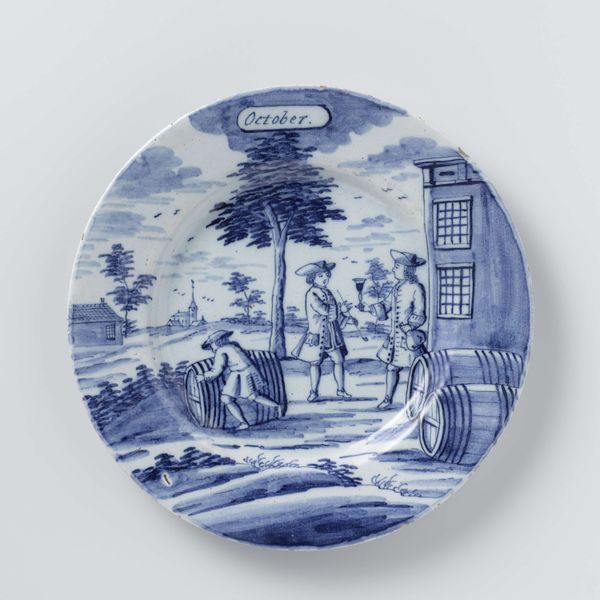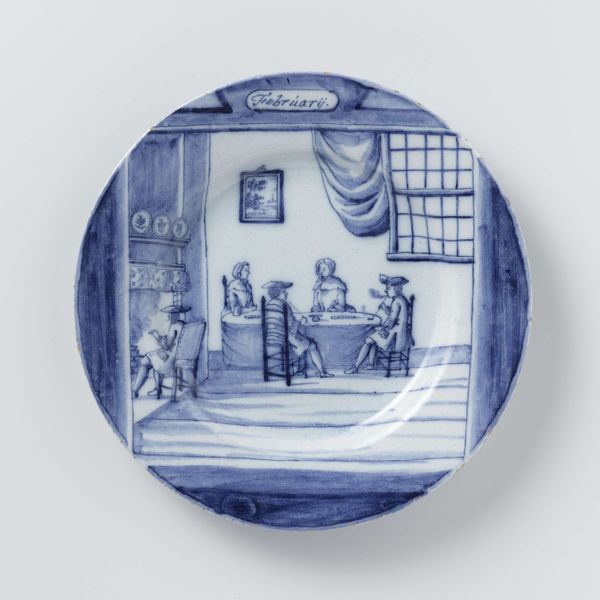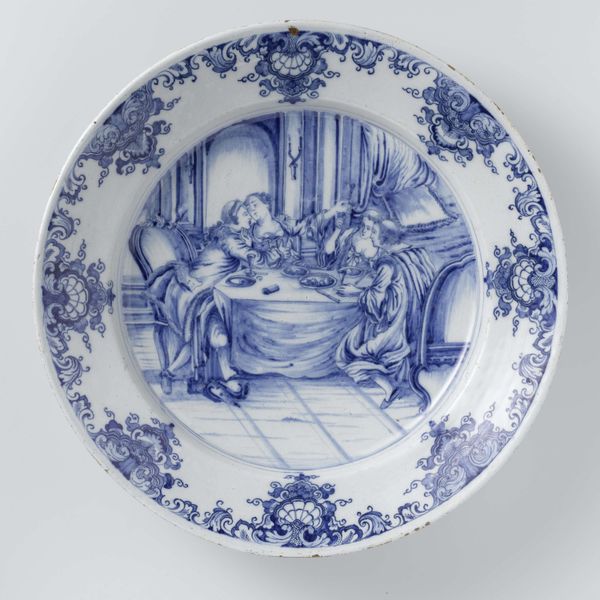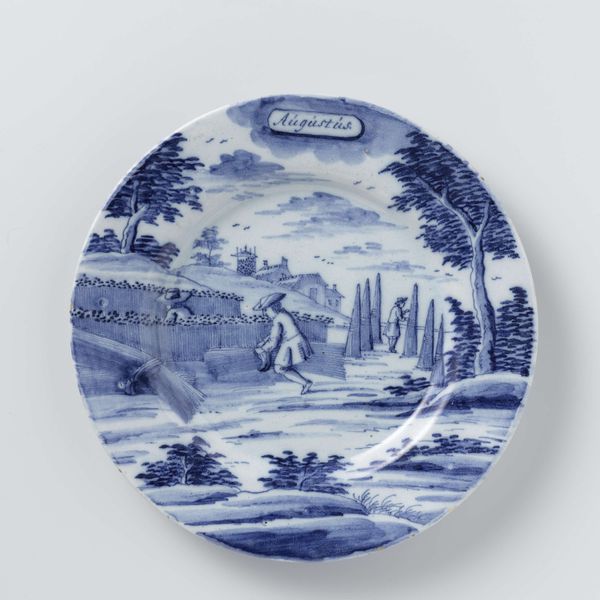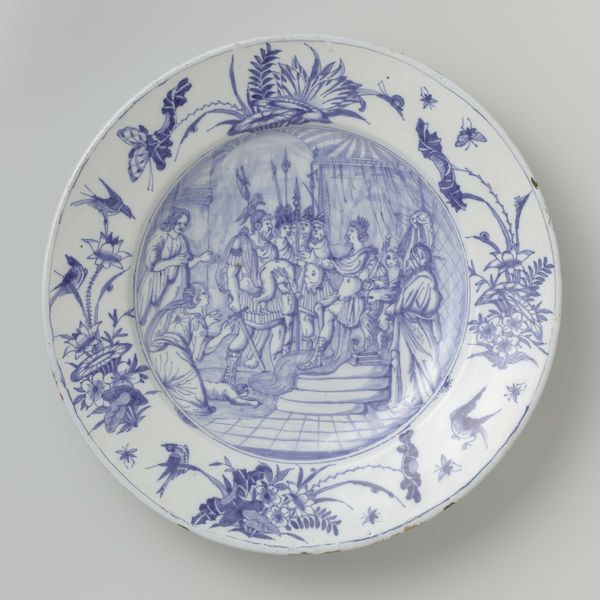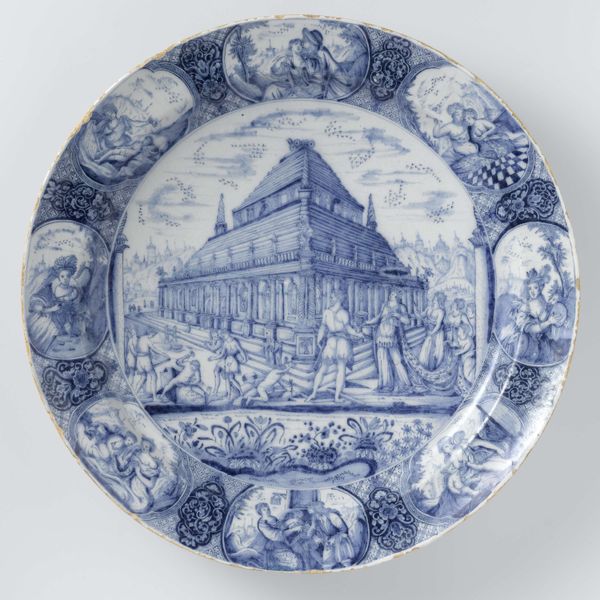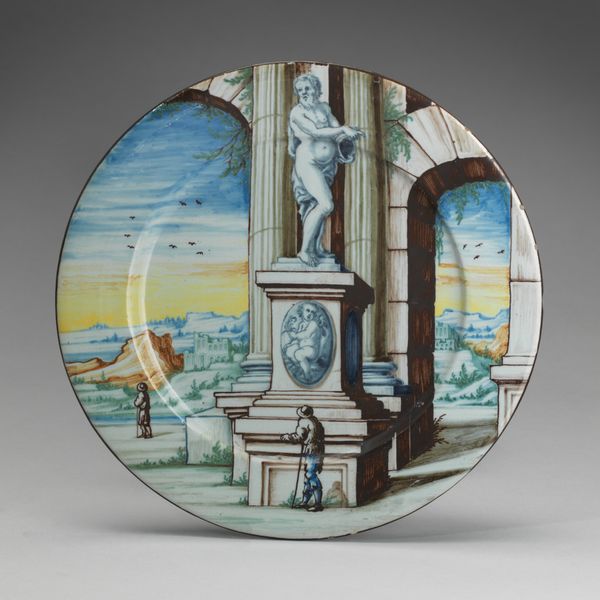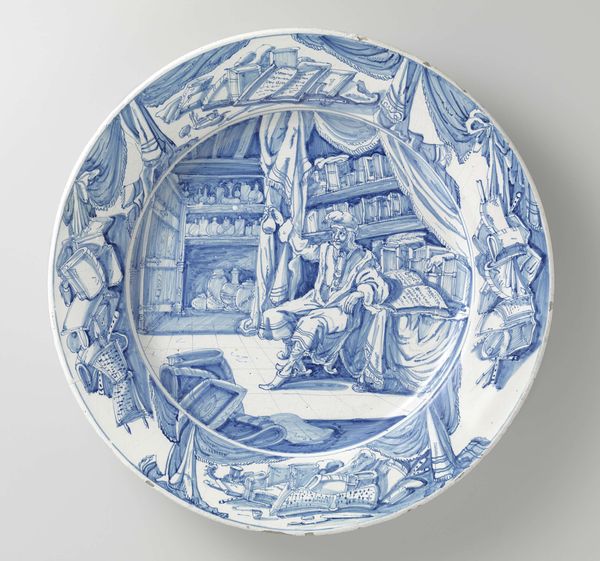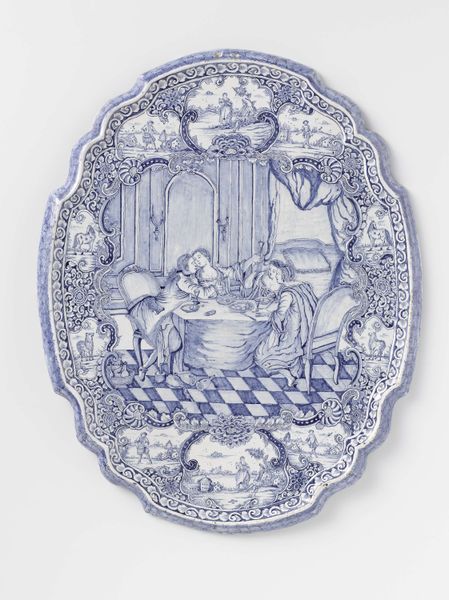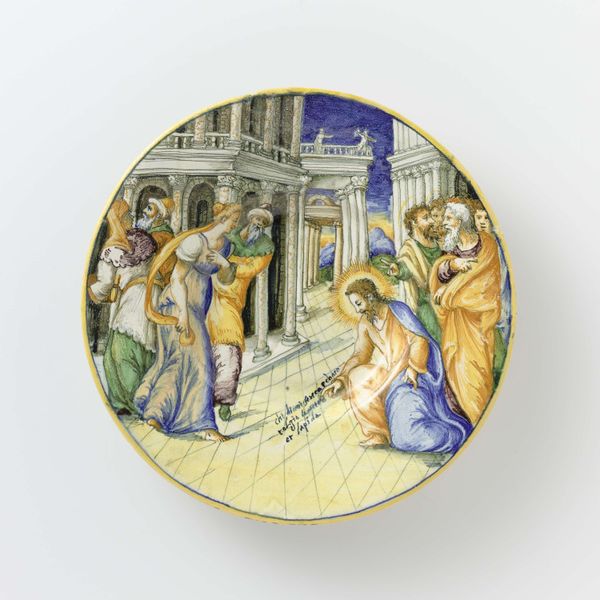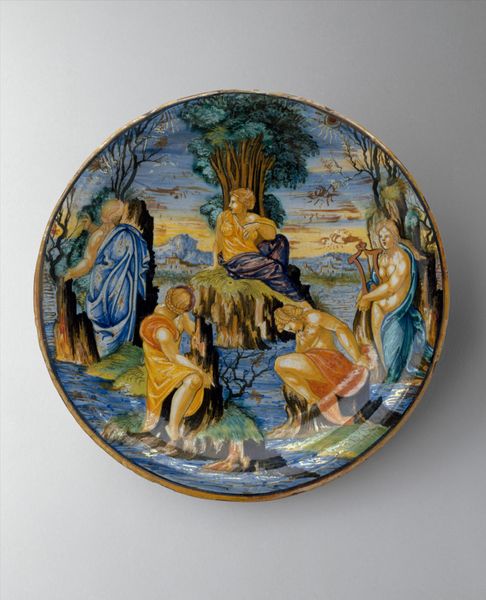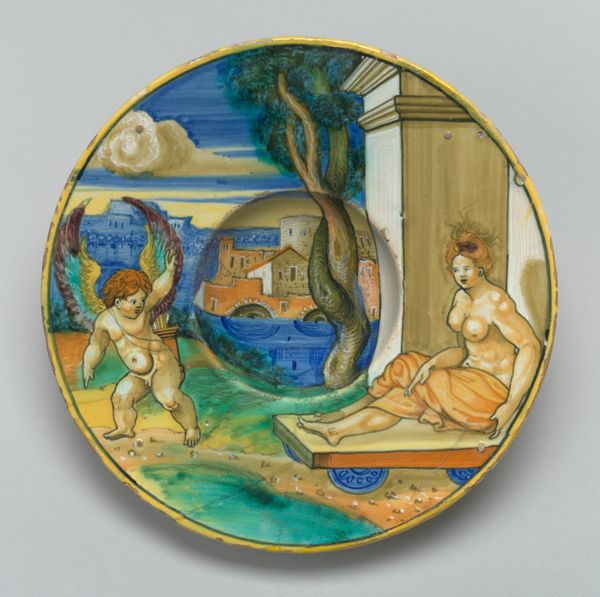
Dimensions: 1 × 9 × 9 in. (2.54 × 22.86 × 22.86 cm)
Copyright: Public Domain
Curator: Here we have "No. 9" crafted around 1780 by the Porcelain Axe Factory, or 'Porceleyne Byl', rendered with drawing and tempera on earthenware. What catches your eye? Editor: Well, the first thing that strikes me is its dreamy quality. The blue and white palette, combined with the idyllic garden setting, evokes a sense of wistful nostalgia. Curator: That’s a key aspect of the Rococo period, which influenced the Factory’s genre scenes, the use of earthenware during this period points to broader patterns of trade. Factories became sites of artistic creation and innovation. Editor: The garden imagery speaks of love and leisurely pursuit. I notice the couple at what seems a little Haring Banket or perhaps "Herring banquet"… Could this reflect some playful flirtation between the sexes that prevailed during the period, a silent contract around privilege, perhaps? Curator: Precisely. Dinner was the domain of the wealthy, who had the resources to buy a vast array of things to present it. Editor: Blue and white is a colour of clarity and insight, so the makers’ decision suggests a wish to communicate a precise view of a very select reality. Do you find any clues in the artist’s handling of proportion? Curator: Notice how they render space. Linear perspective is somewhat flattened. This isn’t careless execution. This emphasizes a decorative harmony over strict realism, which would fit well within Rococo's decorative sensibility. The composition feels intentional and carefully balanced. Editor: Right, it’s an intimate tableau presented on an intimate object for what I'm sure were intimate settings. Curator: Indeed. Considering the function and period, "No. 9" is more than a ceramic dish; it's a cultural artifact offering insights into the lives, customs, and aesthetic preferences of its time. Editor: Thank you. Looking at it this way reveals its cultural importance more than just what the Factory sold; "No. 9" provides an artistic lens through which to examine Rococo period, and social aspirations surrounding it.
Comments
minneapolisinstituteofart about 2 years ago
⋮
This series of twelve plates is painted with scenes related to fishing for herring. While undistinguished in appearance, this silver fish was an abundant source of food in the North Sea and supported a vast fishing industry in the Netherlands. Herring fishing accounted for such a large percentage of the wealth of the Dutch Republic that Amsterdam was said to have been built on herring bones.
Join the conversation
Join millions of artists and users on Artera today and experience the ultimate creative platform.


